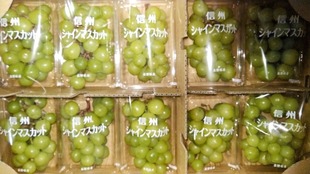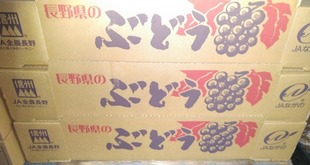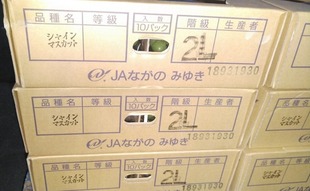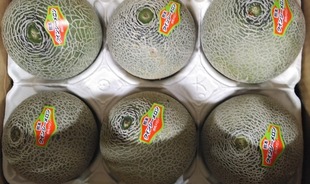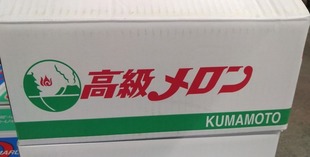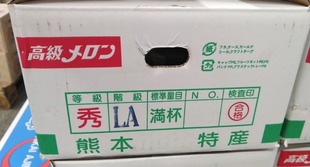【Product name】
Green House Kumquat (Kagoshima Kumquat/Iriki)
【Type】
Fortunella japonica
【Producing area】
Satsumasendai City, Kagoshima Prefecture (JA Kitasatsuma)
【Origin of name】
I heard that it was named after the meaning of citrus fruit that shines in golden color.
【Major features】
At Fujikawa Tenjin in Togo Town (Sugawara Shrine: a legend that Michizane, known as the god of learning and relocated to Dazaifu, retired and died in this area), “garyobai plum trees” is in full bloom, and the double-flowered pale pink Flowers are telling worshipers that spring is coming soon. It is in full bloom until the middle of March. It is called garyobai plum trees because it becomes an old tree, its branches fall down, its roots come out from the part in contact with the ground, and its trunk looks like a dragon that crawls on the ground. About 300 plum trees in the precincts had a lightning strike at Sugawara no Michizane (pavilion used as the emperor’s habitual residence (in Heian Palace) on June 26, 930, Heiankyo imperial palace), and Fujiwara no Kiyotsura in the chief councilor of state. There was an incident in which (nobility) died instantly. At that time, this lightning strike was attributed to the stagnation of Michizane, who had been relegated to the palace. It seems that 55 of them are designated as national natural memorials. Satsumasendai City Bamboo Biomass Industrial City Conference: What is the Bamboo Biomass Industrial City Concept? The bamboo resources around Satsumasendai City are reconsidered as “biomass (renewable organic resources derived from living organisms)”, not only in the conventional bamboo utilization field. It also refers to the creation of a city that creates activities that promote true industrialization from the upstream to the downstream of the industry, including the collection and processing of diverse and multifunctional materials and products, and bamboo resources. We are comprehensively promoting the utilization of “bamboo,” which is a regional resource and at the same time a regional issue, from upstream to downstream, fostering high value-added industries and creating employment. With the promotion of the project, we are trying to realize a low-carbon society as a bamboo forest conservation and global warming countermeasure. Through good employment environment and living environment, we aim to increase the resident population and realize a comfortable city to live in. “Tajima Technology Co., Ltd.” (Soeda Iriki Town), with Satsumasendai City as the organizer, has housed bamboo cellulose nanofiber, which is a new material applying bamboo, with Nikken Housing System, LIXIL, and Figura. / Concluded an agreement on December 20, 2017 with the aim of smoothly expanding into the building materials field. This agreement is related to the fact that a consortium consisting of companies participating in the Satsumasendai City Bamboo Biomasen Industry City Council was adopted by the Ministry of the Environment for the “2017 Cellulose Nanofiber Utilization Product Performance Evaluation Consignment Business”. It was concluded for the purpose of strengthening cooperation between the parties. Business contents: Information system business, civil engineering integration software development / sales, environmental business, various color paving work, erosion prevention / dustproof material sales, water-based nano paint sales, environment-related material sales, ready-mixed concrete manufacturing / sales business, Miyanojo district student Concrete cooperative. Established with capital of 8 million yen. 1982, 13 employees (as of 2018) History, 1982 As Tajima Technical Consultant Co., Ltd., started business with the contents of ready-mixed concrete test work and soil test work. Kyoto Arts and Crafts University, 2013: From Mr. Akira Miyazaki, then president. Kagoshima Prefecture is blessed with a warm climate and vast fields, and livestock is thriving. Among them, the number of Japanese Black breeds raised is 357,000, which is the highest in Japan (as of February 2012), and its share has reached less than 20% in Japan. It seems that calf production has been active there for a long time, and fattening and cattle have been supplied nationwide. The Kita Satsuma area, where the “Kita Satsuma beef Japanese beef cow club” is located, has been active in calf production for some time, and there are still some private artificial insemination centers, and it seems that they have been working hard to improve the Japanese beef cow. As a result, many excellent bulls are active. One of them, Gaku, the predecessor of the Tokushige Japanese beef cow artificial insemination center, was working hard to study Japanese beef cow around 1960 as a trainee at a ranch at Kyoto University under the guidance of Professor Mr. Shoji Kamisaka. That’s right. The author, who was a student at that time, seems to have been taken care of every time he practiced. The Satsuma Central Livestock Market, which is close to this area, is a nationally known high-priced calf market, and the Kita Satsuma area is one of the leading breeding grounds for Japanese beef. However, even with such a land pattern, it seems that management working on fattening was born. In 2012, it seemed that they had finally regained their composure, but in reality, feed prices continued to rise as consumers continued to prefer low prices due to the prolonged recession. Therefore, it seems that many businesses suffered from a decline in profitability. Until the first half of 2012, the crop of U.S. corn was good, and I was relieved to hear that the production was expected to increase. It seems. As a result, the prices of feed grains overseas have soared across the board, affecting the prices of compound feeds in Japan. However, even under such circumstances, it seems that there were cases where producers narrowed down their wisdom and made various efforts to stabilize management. We are investigating the activities of the “Kita Satsuma Beef Wagyu Club” (Kagoshima Prefecture), which is realizing highly profitable management by advancing the breeding technology of fattening cows and breeding cows and jointly shipping fattening cows through friend-making activities. It seems that they wanted to ship fattening cattle to Tokyo because their main shipping destinations were mainly in Kansai such as Osaka and Kyoto, and they wanted to break through the situation where Kagoshima beef from Kagoshima prefecture is not very well known in Tokyo. In addition, the manager of Miyazaki Prefecture seems to have wanted to catch up with him as a business person. However, from that time on, it seems that the general idea in the prefecture was “I don’t dare to send it to Tokyo because it sells well in Kansai.” It seems that Mr. Takayuki Haraguchi, a railroad writer, also said on the radio that “Kyushu people have had a temperament of being out of the question, such as Tokyo, which has stopped in Kansai for a long time.” They couldn’t stand it, and around 2005, they were introduced by an acquaintance to have the opportunity to ship fattening beef to the Tokyo Central Wholesale Market Meat Market (hereinafter referred to as the Tokyo Meat Market). As soon as it was shipped not only to Tokyo but also to Yokohama, the load was increased, and it seems that truck transportation was carried out by two cars a month in 2007 and three cars a month in 2020. It takes a whole day to transport, but I don’t think it’s far away, and it seems that the effect on the flesh color that I was worried about was over. Around the same time, it seems that some distributors registered the brand “Satsuma Saigo beef” as a trademark and started shipping fattening beef from Kagoshima prefecture to Tokyo. They also took that route at first, but it seems that they formed a club so that they could ship to Tokyo in earnest with their own friends. At that time, fattening and cattle were often introduced outside. Most of them were introduced from Satsuma Central Market, and the rest were introduced from Tanegashima in the Osumi Islands in the prefecture, Yoron Island in the Amami Islands, and Ishigaki City in Okinawa Prefecture. Previously, castration was more than 70%, but now it seems that females are 70% due to requests from high-end meat specialty stores. For the introduction, select a cow with cheeks that is not over-fertilized for its large body and has ribs and looks good to bite, and at the same time, carefully observe the horns and hooves and choose the one without a medical history. It seems that it was introduced at the price of. Fattening cattle are introduced at the age of 8 to 10 months and shipped at the age of 28 to 30 months. In the past, it was often shipped at the age of 28 months, but as a result of emphasizing meat quality, it seems that most of them are now shipped at the age of 30 months. Buyers at the Tokyo Meat Market are asking, “I want you to keep it for a long time,” and it seems that females in particular tend to prefer to buy things over the age of 30 months. However, the club does not intend to fatten any more. On the other hand, castration is not always the case, and it seems that it is shipped even at the age of 28 months when it is finished. The factory weight is 750 to 780 kg for castration and close to 700 kg for females, and the average carcass weight is 520 kg for castration and 450 kg for females, but recently it is not uncommon for females to reach 500 kg. That’s it. For fattening, externally introduced cows need to be re-reared for 2 months for steers and cows for about 3 months, but self-produced calves do not need to do so, and there is no stress due to transportation, so fattening results. Seems to be good. Therefore, it seems that home-grown calves are all fattening, except for cows that are specially left as successors. The reason why the club manages the breeding in a unified manner during fattening is to maintain the Kita Satsuma beef brand shipped to Tokyo. The compound feeds they feed during the fattening period are the best formulas they have studied over the years, and it seems that the feed companies are outsourced to feed them in common for all management. Even if the compound feed for fattening is common, it seems that it is up to each person to provide supplementary feed other than that. That is the point of ingenuity, and it seems that by examining the finish of carcasses by doing so for each shipment, the breeding management technology in the club will spread in a positive direction. The early fattening period includes a re-breeding period, which seems to be usually about 4 months. During this period, the main diet is roughage, and it seems that concentrated feed is being fed in a restrained manner. In addition to domestic rice straw, it seems to give 2 kg of rice whole crop silage and 2 kg of whiskey lees of food residue every day. In the middle and late stages, it will become a corn-based compound feed and will shift to full-scale fattening. As the fattening progresses, roasted soybeans are also fed, which seems to improve the luster of the meat. In addition, it seems that they are feeding rice bran and rice flour containing oleic acid, which is said to enhance the deliciousness of meat, as a snack. The reason why the middle and late stages of fattening are not particularly distinguished is that the cattle fattened in Kagoshima prefecture are larger and bite better than before. The roughage at this time is to feed Timothy hay until 21 months of age, but after that, it seems that only rice straw is used for vitamin control. However, I am always observing carefully to prevent accidents due to vitamin deficiency. When the body gain stops or the cow becomes sharp, it is a dangerous condition with advanced deficiency, and if it is judged that vitamin A deficiency, it seems that a small amount of Haycube may be given. The accident rate in the management of each member is 2%, but most of them seem to be 1% or less. It seems that the management with a high accident rate seemed to have tight vitamin control with the aim of being good. It seems that every effort has been made to manage fattening cattle, and the structure of the barn has been devised to accommodate larger cattle, such as by designing a large breeding tank and widening the bottom to make it easier to eat feed. In the barn, there is an automatic feeder in which compound feed is carried by pipes, and the structure is such that it automatically drops into the breeding tank, but sometimes it is dropped manually and the cows in the barn (mass) are observed. It seems. It seems that management that has no people in the barn for a long time has the belief that both fattening and breeding will fail. It seems to be important especially when controlling vitamins in the late fattening period. The water supply device is a foot-operated type, and it seems that all the accumulated water is drained at once and new water is accumulated. As he walks down the aisle, he finds a dirty aquarium and pedals to replace it, making sure the cows are always ready to drink clean water. Everything seems to be trying to keep the cows tidy in order to create a comfortable environment for the cows. As a measure against the summer heat in the barn, a direct-type ventilation fan has been used for some time, so the litter dries well and the cow body is not very dirty. Furthermore, from 2008, it seems that he decided to install a pipe on the top of the barn trout and pour fog from above. It seems that spraying is automatically continued every hour in early summer and every 20 to 30 minutes for 40 to 50 seconds from 10 am to evening before the temperature rises. Cows gather under it to survive the heat, so it seems that the bite in the summer will not drop. In addition, it seems that the outbreak of flies in the barn could be prevented by mixing and spraying a disinfectant with this fine mist device. Even if you pay close attention to feeding management, you may still get sick, but at that time, mutual aid and private veterinarians will come to you immediately. It seems that breeding cows are fed mainly roughage feed. Therefore, even fattening management seems to be enthusiastic about utilizing paddy fields and upland fields. The area of cultivated land in the club is 21 hectares of paddy fields, 8 hectares of fields, and 5 hectares or less. Cultivation of Italian ryegrass; Lolium multiflorum(ネズミムギ)is common for paddy field back crops, and it seems that rice and corn are prepared by contractors for whole crop silage. In addition, it seems that people are always trying to be in the barn because it is important to observe the breeding cows so that they do not overlook the appropriate time for estrus. Visual confirmation is the most important, but it seems that cows are equipped with a pedometer-type estrus detection device to cover oversights and to reduce labor. In addition, we have introduced a delivery monitoring and reporting system, which is the first in the prefecture, and it seems that you will notice it even if you are sleeping because the notification of the decrease in body temperature one day before delivery is sent to your mobile phone. Some people do the seeding individually, while others ask the artificial insemination teacher who was a former employee, but it seems that they are all seeding in a timely manner. Raised cows and cows that have been tested for pregnancy will be grazed during the day, exercised sufficiently for health management and fertility improvement, and will be moved to the calving barn when calving approaches. It seems that the calves born are weaned early and artificially bred in 3 days after birth, at the longest 5 days. At that time, some people use a feeding robot and some people use a bucket, and after using the artificial feeding nipple, they are soaked in a bucket containing a disinfectant. In this way, early weaning accelerates the return of maternal estrus and seems to maintain the reproductive performance of annual production. In addition, it seems that newborn calves keep warm in the winter with a hanging electric stove and lower the curtains to prevent the wind and keep out the cold. In general, there seems to be a big technical difference in the feeding management of breeding cows and fattening cows. It seems that the pioneers who aimed for integrated management often made mistakes. Breeding cows should be kept on roughage and supplemented with a small amount of concentrated feed during the last 3 months of pregnancy to increase fetal development and subsequent lactation capacity of the mother, but fattening cows should be fed with more concentrated feed. It seems that I have to pay. In the integrated management that entered from the breeding cow management, it tends to fail to sufficiently fertilize the fattening cow, and conversely, in the integrated management that entered from the fattening cow management, the breeding cow became over-fertilized and suffered from breeding disorders. With that in mind, they seem to have separate barns and personnel to avoid technical confusion. From the beginning, they thought that fattening and breeding were technically different, and he seemed to have successfully adopted integrated management. In addition, in order to improve the ability of the mother cow herd, he was thinking about what kind of crossing would be good by analyzing the carcass data after fattening of the offspring. As the good points of integrated management became clear, it seems that the intention to expand the breeding cow sector and to be able to produce 50 to 60% of the fattening cows in-house has begun to appear. It seems that the labor force is not so much because we try to work efficiently even if we are breeding multiple animals. Rabbits and horns have a good attitude of not refusing what they leave and not chasing those who leave. “JA Kita Satsuma” covers two cities and one town, Satsuma Town, Satsumasendai City, and Isa City, which are located in the Sendai River basin in the northern part of Kagoshima Prefecture. It is the coolest area in the prefecture and is famous as one of the prefecture’s leading rice producing areas. The cultivated “Akihonami Rice(The grains are large and sticky, and there is a chewy feeling in the refreshing taste. It is glossy and sweet, and is delicious without being too sticky or dry even when cooled. I hear that the name comes from the image of “a wave of rice ears that have grown in the fall.”)” from the northern part of the prefecture has been selected as “Special A”, which is said to have the best taste in the rice taste ranking, for eight consecutive years. In addition, the calf price of the Satsuma Central Livestock Market is the second highest in the country, which is one of the highest prices. In addition, JA certifies carefully selected agricultural and livestock products such as mango, tomato, bamboo shoot, and kumquat as the original brand “Satsuma no Satsuma(Businesses and groups are united across barriers, establishing a regional brand that unifies the town, and aiming to develop economic activities for sustainable development.)” and sells them in gift catalogs to appeal the seasonal taste of Kita Satsuma nationwide. I heard that you are doing it. Satsumasendai City is located in the northwestern part of the Satsuma Peninsula. It consists of the mainland area adjacent to Kagoshima City and Ichikikushikino City in the south, and Akune City in the north, and the Koshiki Island area consisting of Kamikoshiki Island, Naka-Koshiki Island, and Shimokoshiki Island. The varied white sand and blue pine coastline facing the East China Sea, the first-class river “Sendai River” that flows slowly through the city, green mountains and lakes such as Imutaike, Kedoin Island with beautiful topographical changes, hot springs in various places, etc. , Has a wide variety of natural environments. These colorful and beautiful natural environments of the city have been designated as Kawauchi River Basin Prefectural Natural Park, Imutaike Prefectural Natural Park, and Koshikishima Quasi-National Park, and seem to be familiar to people. On October 12, 2004, Sendai City, Hiwaki Town, Iriki Town, Togo Town, Kedoin Town, Sato Village, Kamikoshiki Village, Shimokoshiki Village, and Kashima Village merged. Total area: 682.92 km2 (from the announcement by the Geographical Survey Institute on February 24, 2016). General incorporated association Satsumasendai Agricultural Corporation (Uranomyo, Iriki Town, Satsumasendai City, Kagoshima): Accumulation of agricultural land for farmers who are aiming to foster new farmers who will be responsible for future agriculture and expand the scale of management, elderly farmers and side jobs Established in 2005 with the aim of developing business in the comprehensive agricultural field and promoting agriculture, such as undertaking agricultural work on behalf of farmers. The Agricultural Corporation is developing businesses centered on the following three businesses. Agricultural trainees who are willing to start new farming and new farming training projects will be recruited, and training on agricultural production technology and management will be conducted as trainees within 1 year and 6 months at the Agricultural Corporation to train new farmers. Allowance is provided during the training period. Based on the Agricultural Land Utilization Accumulation Facilitation Project and the Agricultural Management Infrastructure Reinforcement Promotion Law, the Agricultural Corporation borrows agricultural land from farmers who want to rent agricultural land, and rents the agricultural land to farmers who are planning to expand the scale of agricultural management. In cooperation with the farm work consignment business and local farm work consignment organizations, we will undertake various farm work such as paddy rice, scallions, burdock, soybeans, etc. to reduce the burden on farmers. Satsumasendai City Agricultural Land Liquidation Promotion Project Subsidy Grant Regulations, October 12, 2004, Regulation No. 168: Article 3 (1) Agricultural Management Infrastructure Reinforcement Promotion Act (1980 Act) to expand the scale of agricultural management No. 65) Article 2 of the Act on Promotion of Agricultural Land Intermediate Management Business, such as the right to use agricultural land prescribed in Article 4, Paragraph 4, Item 1 and the lease right under Article 3 of the Agricultural Land Act (Act No. 229 of 1952). Agricultural land intermediate management right prescribed in Paragraph 5 or lease right for agricultural land for which the Agricultural Land Intermediate Management Organization has agricultural land intermediate management right pursuant to the provision of Article 18 Paragraph 1 of the same Act, or lease right by various other agricultural land liquidation measures Being a farmer, etc. (hereinafter collectively referred to as “use rights, etc.”). Cultivation began in 1983 in Satsumasendai City. Currently, 46 members of the club are cultivating in a house area of 9.6 ha, and it seems that they are working on high-level leveling of production technology and improvement of quality. It has been certified as a “Kagoshima brand production area” and continues to acquire the Kagoshima agriculture, forestry and fishery products certification system. I heard that you are trying to grow kumquat safely and securely. The main shipping destinations are the Kanto and Kansai markets. It seems that some of them are also exported to overseas such as Hong Kong. In 2021, the co-sales volume was expected to be 240 tons and the sales amount was expected to be 222 million yen.(Cultivation of house kumquat began in 1983, and it is currently positioned as a priority item in Satsumasendai City, and was cultivated in a Greenhouse area of 12.0 ha by 63 members of the Kumquat Specialization Subcommittee.)Kagoshima Agriculture, Forestry and Fisheries Certification System: 204009, 2016, November 29, Kumquat, Kita-Satsumasendai Fruit Tree Subcommittee Kawauchi Kumquat Special Subcommittee Wakamatsu Town, Satsumasendai City, 224.0 t, 12.0 ha. Public interest incorporated association from Kagoshima Prefecture Agriculture and Rural Promotion Association: H17.11.15, H18.11.20, H19.11.20, H20.11.18, H21.11.17, H22.11.16, H23.11.22, H24.11.28, H25.11.26, H26.11.25, H27.11.30, 204009: Fruit tree Kumquat Kawauchi fruit tree Subcommittee, Kumquat Special Subcommittee, Department Chairman Ms. Kanae Kumamoto, Department Chairman Mr. Ittetsu Watanabe, Department Chairman Ms. Kanae Kumamoto, Department Chairman Mr. Mizuo Hiraki, Department Chairman Kumquat Special Subcommittee Department Chairman Mr. Hiroshi Ishinoda, Department Chairman Shigehiro Takagi, 91 people, 87 people, 86 people, 83 people, 81 people, 76 people, 73 people, 73 people, 72 people, 70 people, 65 people, 11.60 ha, 11.70 ha , 11.7 ha, 11.69 ha, 12.37 ha, 13.48 ha, 12.81 ha, 13.119 ha, 12.79 ha, 12.54 ha, 12.4 ha, 180 t, 190 t, 191 t, 198 t, 210 t, 250 t, 238 t, 244 t, 238 t, 237 t, 231 t. The variety is uncertain, but many who are studying fruit trees know that there is a “Ninpo kumquat” in Japan. It is one of the many kumquat varieties in Japan and one of the few fruit trees with a place name in its name. On January 2, 1826, a Ningbo merchant ship named “Tokutai; E Tai” departed from Zhapu Port in Zhejiang Province. Originally, it seems that it was planned to send three Japanese merchants to Nagasaki. However, the hull was damaged by the storm, and it was said that it was off the route and washed ashore near Shizuoka prefecture. While moored in Shizuoka, the person who was in charge of providing food to the “Tokutai-issue” was Gonzaemon Shibata, who discovered that there was a rare variety of kumquat in the “Tokutai-issue”. It seems. Clearly different from the kumquats he had seen before, it was round, big and very flavorful. Therefore, he asked the captain to divide the fruit into several pieces, planted the seeds in his garden, and carefully raised them. Then, it became possible to produce good quality fruits. After that, the kumquat left by the “Tokutai-issue” came to be called “Ningbo kumquat”, and I heard that it took root in Japan and was cultivated all over Japan. Introducing the origin of Miyazaki from the Ministry of Agriculture, Forestry and Fisheries variety registration homepage. Types of agriculture, forestry and fisheries plants Fortunella Swingle (Japanese name: Kinkan genus) Name of registered variety Miyazaki Omaru, Variety name at the time of application publication Application number, 23467, Date of application, 2009/02/18, Date of publication of application, 2009/04/22, Registration number 20868, Date of registration 2011/07/11, Duration of breeder’s rights 30 years, Training Date of extinction of human rights Name and address of varieties registrant, Miyazaki Prefecture (Tachibana-dori Higashi, Miyazaki City): Name of the person who bred the registered varieties, Mr. Hisayoshi Takeshima, Mr. Ryoichi Kodama, Mr. Ryutaro Nagata, Mr. Shigefumi Kuroki, Mr. Kazunori Yamaguchi, Mr. Kenji Tokuman, Mr. Takahiro Aratake, Mr. Tsunekazu Kuroki, Mr. Tetsuji Kinoshita, Mr. Rikiya Hirata, Mr. Makoto Sano, Mr. Shinichi Kushima, Restrictions on exports Yes No designated countries. The tree is upright, the density of the shoots is dense, the size of the tree is small, the tree vigor is weak, the thickness of the shoots is thick, the length of the shoots is long, the internode length is short, and the thorns of the shoots. Somewhat many, leaf blade shape is spindle-shaped, leaf blade wavy degree is weak, leaf blade size is extremely small, leaf height is short, leaf blade width is narrow, leaf shape index is small, net vein sharpness is unknown , The shape of the wing leaves is a trace, the length of the leaf stalk is short, the thickness of the leaf stalk is medium, the formation of the inflorescence is solitary, the weight of the flower (flower bud) is very light, the shape of the petal is spindle-shaped, the length of the petal Is extremely short, the width of the petals is extremely narrow, the color of the petals (outside the buds) is white, the number of petals is 4, the degree of separation of the filaments is unified, the amount of pollen is slightly large, and the shape of the fruit is Long sphere, the shape of the apex is a circle, there is no radial groove on the apex, there is no concave ring on the apex, the shape of the pericarp is a cut plane, there is no radial groove on the apex, The fullness of the fruit core is dense, the size of the fruit core is small, the weight of the fruit is medium, the color of the pericarp is dark orange, the size of the oil vesicles is a mixture of large and small, the density of the oil vesicles is dense, and the unevenness of the oil vesicles. Is convex, the rough surface of the leaf is smooth, the thickness of the peel is medium, the ratio of the peel is maximum, the color of the leaf (flesh) is orange, the juice is medium, the sweetness is high, the acidity is medium, and the aroma is slight. Medium, small number of seeds, very late germination, very late flowering, slightly early maturity, low biennial results, no floating fruit, no cracking, short storability be. (RHS is used for the color chart) The application cultivar “Miyazaki Omaru” has more thorns on the shoots and denser oil vesicles than the control cultivar “Ninpo Kumquat”. It is said that distinction is recognized. Name of registered variety “Miyazaki Yumemaru” : Variety name at the time of publication of application, application number 23468, date of application 2009/02/18, date of publication of application 2009/04/22, registration number 19999, date of registration 2010 / 11/15, Duration of breeder’s right 30 years, Date of extinction of breeder’s right Name and address of variety registrant, Miyazaki prefecture, Name of person who cultivated registered variety, Mr. Hisayoshi Takeshima, Mr. Ryoichi Kodama, Mr. Shigefumi Kuroki, Mr. Yamaguchi Kazunori, Mr. Kenji Tokumatsu, Mr. Takahiro Aratake, Mr. Tsunekazu Kuroki, Mr. Tetsuji Kinoshita, Mr. Rikiya Hirata, Mr. Makoto Sano, Restrictions on Exporting Acts No designated country. The tree shape is medium, the density of the shoots is medium, the size of the tree is small, the tree vigor is weak, the thickness of the shoots is thick, the length of the shoots is long, the internode length is medium, and the thorns of the shoots. Somewhat many, leaf blade shape is spindle-shaped, leaf blade wavy degree is weak, leaf blade size is medium, leaf height is short, leaf blade width is extremely narrow, leaf shape index is extremely small, and the sharpness of the net vein is slightly clear, no wing leaf shape, short leaf stalk length, medium leaf stalk thickness, solitary inflorescence formation, very light flower (flower bud) weight, petal shape is spindle-shaped, petal The length is extremely short, the width of the petals is extremely narrow, the color of the petals (outside the flower buds) is white, the number of petals is 5, the degree of separation of the filaments is unified, the amount of pollen is slightly large, and the fruit The shape is a long sphere, the shape of the apex is a circle, the presence or absence of a radial groove on the apex is absent, the presence or absence of a concave ring on the apex is absent, the shape of the pericarp is a cutting plane, and the radial groove on the apex is slightly No, the fullness of the fruit core is dense, the size of the fruit core is small, the weight of the fruit is slightly light, the color of the pericarp is dark orange, the size of the oil vesicles is slightly small, the density of the oil vesicles is medium, oil. The unevenness of the vesicles is flat, the rough surface of the fruit is smooth, the thickness of the pericarp is medium, the ratio of the pericarp is maximum, the amount of fruit juice is small, the sweetness is high, the acidity is extremely low, the aroma is medium, and the number of seeds is high. No, germination period is extremely late, flowering period is extremely late, maturity period is early, biennial result is low, no floating fruit is generated, no fruit cracking occurs, and storage is short. Compared to the control variety “Ninpo Kumquat”, the application variety “Miyazaki Yumemaru” is distinguished by the fact that the amount of fruit juice is less, the acidity is extremely low, and the number of seeds is absent. Be done. Compared to the control variety “Puchimaru”, it is said that the distinction is recognized by the medium density of oil vesicles and the extremely low acidity. Name of registered variety, “Petit Maru” : Variety name at the time of publication of application Application number 11814, Date of application 1999/06/10, Date of publication of application 2000/02/22, Registration number 10379, Date of registration 2002/07 / 10, Duration of breeder’s right 25 years, Date of extinction of breeder’s right Name and address of variety registrant, National Research and Development Corporation Agriculture and Food Industry Technology Research Organization (Kannondai, Tsukuba City, Ibaraki Prefecture): Registered variety Names of those who bred, Mr. Toshio Yoshida, Mr. Hirohisa Nekaku, Mr. Terutaka Yoshioka, Mr. Hiroyuki Iejo, Mr. Yuji Ito, Mrs. Mutsuko Nonomura, Mr. Isamu Ueno, Mr. Akio Yamada, Mr. Shoji Murase, Mr. Fumitaka Takishita, No designated country none. This variety was cultivated by crossing “Nagami kumquat(Citrus margarita: A variety of kumquat in the family Rutaceae. An evergreen shrub that came from China.)” with “Tetraploid ninpo kumquat”. The fruit shape is prolate spheroid, the fruit weight is slightly light, the skin color is dark orange, and the breeding ground (Shizuoka). In Shimizu City, Shizuoka Prefecture, it is a triplet variety of early-maturing varieties that matures in mid-January. The shape of the tree is medium, the size of the tree is a little small, and the tree vigor is medium. The thickness of the shoots is thick, the internode length is short, and the thorns are medium. The shape of the leaf blade is spindle-shaped, the degree of wavyness is weak, the size of the leaf blade is extremely small, the leaf height is short, the leaf blade width is extremely narrow, and the sharpness of the net vein is unknown. The shape of the wing leaves is absent, the length of the petiole is short, and the thickness is thin. The formation of inflorescences is solitary, the weight of flowers (flower buds) is extremely light, the shape of petals is spindle-shaped, the length is short, the width is medium, the color is white, the number is 5, and the degree of separation of pollen is the same. First, the amount of pollen is a little high. The shape of the fruit is a prolate spheroid, the fruit shape index is quite small, the shape of the apex is a circle, there is no radial groove and concave ring, the shape of the fruit stem is a cut plane, and there is no radial groove. The fruit core is dense, the size is medium, the weight of the fruit is slightly light, the color of the pericarp is dark orange, the size of the oil vesicles is slightly large, the density is sparse, the unevenness is flat, and the fruit surface is rough. Is slippery, the thickness of the pericarp is medium, the pericarp ratio is maximum, and the difficulty of peeling is medium. The hardness of the sac is medium, the shape of the sac is short, the size is extremely small, and the color is orange. The juice is slightly low, the sweetness is high, the acidity and aroma are medium, the number of seeds is absent, and the number of embryos is single embryo. The germination period and flowering period are extremely late, the maturity period is early, and in the growing area, it is mid-January. Biennial bearing is low, no floating peels and cracks occur, and storage is short. Compared to “Nagami Kumquat”, there are more thorns on the shoots, there are no seeds, etc., and compared to “Ninpo Kumquat”, there are no seeds, single embryos, etc. It is said that distinction is recognized in. Name of registered variety “Yumi-chan’s Hoppe” : Variety name at the time of publication of application Application number 16910, Date of application 2004/04/08, Date of publication of application 2004/12/17, Registration number 14785, Registration date 2007/02/20, Duration of breeder’s right 30 years, Extinction date of breeder’s right 2010/02/23, Name and address of variety registrant, Mrs. Yoshiko Furuya (section of village north, Kushima City, Miyazaki Prefecture) ): Name of the person who bred the registered variety, Mrs. Yoshiko Furuya. This variety is a sport of “Ninpo Kumquat”, which has a long ball shape, medium fruit weight, orange peel color, and early-maturing varieties that mature in early December in the growing area (Kushima City, Miyazaki Prefecture). The appearance of the tree is upright, the size of the tree is small, and the tree vigor is weak. The thickness of the shoots is thick, the internode length is short, and the thorns of the shoots are medium. Leaf blade shape is spindle-shaped, tip shape is sharp, wavy degree is weak, leaf blade size is extremely small, leaf height is short, leaf blade width is extremely narrow, leaf shape index is small, lesser omentum is clear The degree is unknown. The shape of the wing leaves is absent, the length of the petiole is extremely short, and the thickness is medium. Inflorescence formation is solitary, flower (flower bud) weight is very light, petal shape is stamen-shaped, length is very short, width is very narrow, color is white, number is 5, and pollen separation The degree is united, and the amount of pollen is medium. The shape of the fruit is a prolate spheroid, the fruit shape index is small, the shape of the fruit apex is a circle, the presence or absence of radial grooves and concave rings is absent, and the shape of the fruit stem is a tangent plane. The fruit is dense, the size is small, the weight of the fruit is medium, the color of the pericarp is orange, the color of the albedo is pale yellow, the size of the oil vesicles is medium, the density is sparse, the unevenness is flat, and the fruit. The rough surface is smooth, the thickness of the pericarp is medium, the percentage of the pericarp is maximum, and the difficulty of peeling is medium. The hardness of the sac is medium, the shape of the sac is short, the size is extremely small, and the color is orange. The juice is medium, the sweetness is quite high, the acidity is extremely high, the aroma and the number of seeds are medium, and the number of embryos is polyembryony. The germination period and flowering period are extremely late, the maturity period is early, and in the growing area, it is early December. Biennial bearing is low, no floating fruit occurs, few cracks occur, short storability, and high sweetness of the pericarp. Compared to “Ninpo kumquat”, the leaf shape index is smaller, and compared to “Nagami kumquat”, the leaf blade shape is spindle-shaped and the sweetness is higher. Name of registered variety, “Yubeni” : Variety name at the time of publication of application Application number 16911, date of application 2004/04/08, date of publication of application 2005/06/23, registration number 14416, date of registration 2006/08 / 22, Duration of breeder’s right 30 years, Date of extinction of breeder’s right 2009/08/25, Name and address of variety registrant, Isamu Kanamaru (Honjo, Kushima City, Miyazaki Prefecture): Person who cultivated registered varieties Name, Mr. Isamu Kanamaru. This variety is a mutant tree of “Ninpo Kumquat”, which has a long ball shape, heavy fruit weight, orange peel color, and is a slightly early-maturing variety that matures in mid-February in the growing area (Kushima City, Miyazaki Prefecture). The appearance of the tree is upright, the size of the tree is small, and the tree vigor is weak. The thickness of the shoots is thick, the internode length is quite short, and there are many thorns. Leaf blade shape is spindle-shaped, tip shape is blunt, wavy degree, leaf blade size and leaf height are medium, leaf blade width is narrow, leaf shape index is medium, leaf thickness is quite thick, net The sharpness of the pulse is unknown, the wings are absent, the petiole is extremely short, and the thickness is thick. The formation of inflorescences is solitary, the weight of flowers (flower buds) is extremely light, the shape of petals is stamen-shaped, the length is short, the width is medium, the color is white, the number is 5, and the degree of separation of pollen is At the same time, some of the pollen is inside. The shape of the fruit is a prolate spheroid, the fruit shape index is small, the shape of the apex is a circle, there is no radial groove and concave ring, the shape of the fruit stem is a cut plane, and there is no radial groove. The fruit core is dense, medium in size, heavy in fruit, orange in pericarp, pale yellow in albedo, medium in size of oil vesicles, sparse, uneven, convex, fruit. The rough surface is smooth, the thickness of the pericarp is thick, and the percentage of the pericarp is maximum. The hardness of the sac is medium, the shape of the sac is short, the size is extremely small, and the color is orange. The juice is medium, the sweetness is fairly high, the acidity is low, the aroma is medium, the number of seeds is small, and the number of embryos is polyembryony. The germination period and flowering period are late, the maturity period is rather early, and in the growing area, it is mid-February. Biennial bearing is low, no floating or cracking fruit occurs, short shelf life, and high sweetness of the pericarp. Compared to “Ninpo kumquat”, the leaves are thicker, the fruits are heavier, etc., and compared to “Nagami kumquat”, the leaf shape index is smaller, the fruits are heavier, etc. Name of registered variety, name of variety at the time of publication of “Benioh” Application number 29051, date of application 2014/03/24, date of publication of application 2014/08/28, registration number 25249, date of registration 2016/06 / 13, Duration of breeder’s right 30 years, extinction date of breeder’s right Name and address of variety registrant, Mr. Yoshinori Eto (section of village Ohira, Kushima City, Miyazaki Prefecture): Name of the person who bred the registered variety, Mr. Yoshinori Eto. The tree is upright, the density of the shoots is dense, the size of the tree is small, the tree vigor is weak, the thickness of the shoots is thick, the length of the shoots is a little long, the internode length is short, and the thorns of the shoots. The shape of the leaf blade is medium, the shape of the leaf blade is spindle-shaped, the degree of leaf blade wavy is weak, the size of the leaf blade is extremely small, the leaf height is short, the leaf blade width is narrow, the leaf shape index is slightly large, and the sharpness of the net vein. Unknown, wing leaf shape is trace, leaf stalk length is very short, leaf stalk thickness is medium, inflorescence formation is solitary, flower (flower bud) weight is very light, petal shape is spindle-shaped, petal The length of the flower is very short, the width of the petal is very narrow, the color of the petal (outside of the flower bud) is white, the number of petals is 5, the degree of separation of the inflorescence is unified, the amount of pollen is medium, and the fruit The shape is a long sphere, the shape of the apex is a circle, the presence or absence of a radial groove on the apex is absent, the presence or absence of a concave ring on the apex is absent, the shape of the pericarp is a cutting plane, and the shape of the radial groove is a little. No, the fullness of the fruit core is dense, the size of the fruit core is small, the weight of the fruit is medium, the color of the pericarp is orange-red, the size of the oil vesicles is medium, the density of the oil vesicles is medium, the oil vesicles The unevenness is flat, the rough surface of the fruit is smooth, the thickness of the skin is thick, the ratio of the skin is maximum, the difficulty of peeling is difficult, the hardness of the bud membrane is medium, the shape of the bud is short, and the shape of the bud is short. The size is extremely small, the color of the sajo (pericarp) is yellow-orange, the fruit juice is medium, the sweetness is high, the acidity is extremely high, the aroma is slightly low, the number of seeds is medium, the bud period is very late, and the flowers bloom. The period is very late, the maturity period is rather early, the biennial result is low, the occurrence of floating peel fruit is absent, the occurrence of fruit cracking is absent, and the storability is short. The application cultivar “Benioh” is distinguished from the control cultivar “Ninpo Kumquat” by the fact that the color of the pericarp is orange-red. Compared to the control variety “Miyazaki Omaru”, the color of the pericarp is orange-red, which makes it distinctive. Last but not least, the name, “Eclique 109” : Variety name at the time of publication of the application Application number 21548, Date of application 2007/10/01, Date of publication of application 2008/01/15, Registration number 18214, Date of registration 2009/06/25, Duration of breeder’s right 30 years, Extinction date of breeder’s right 2015/06/26, Name and address of variety registrant, National Federation of Agricultural Cooperatives (Ote Town, Chiyoda Ward, Tokyo) : Names of those who bred registered varieties, Mr. Atsushi Owada, Mr. Takumi Wakitsuka, Mr. Toshiro Nagao, Mr. Kuniaki Sugawara, Mr. Satoshi Nishiyama, Mrs. Eriko Inoue, Mrs. Mitsuko Takamatsu. The tree is upright, the density of the shoots is dense, the size of the tree is small, the tree vigor is medium, the thickness of the shoots is quite thick, the length of the shoots is medium, the internode length is short, and the thorns of the shoots. The shape of the leaf blade is oval, the degree of leaf blade wavy is quite weak, the size of the leaf blade is extremely small, the leaf height is short, the leaf blade width is extremely narrow, the leaf shape index is extremely small, and the net vein The sharpness is a little clear, the shape of the wing leaves is a trace, the length of the leaf stalk is very short, the thickness of the foliage is a little thick, the formation of the inflorescence is solitary, the weight of the flower (bud) is very light, the shape of the petal Is spindle-shaped, petals are short, petals are narrow, petals (outside the buds) are white, the number of petals is 5, the degree of separation of the filaments is partially united, and the amount of pollen is small. Many, the shape of the fruit is a long sphere, the shape of the apex is flat, the presence or absence of a radial groove on the apex is absent, the presence or absence of a concave ring on the apex is absent, the shape of the apex is a cutting plane, and the shape of the apex is a radial stripe. There are no grooves, the fruit core is dense, the size of the fruit core is quite small, the weight of the fruit is extremely light, the color of the fruit skin is dark orange, the size of the oil vesicles is medium, and the density of the oil vesicles. Medium, the unevenness of the oil buds is convex, the rough slip of the fruit surface is smooth, the thickness of the fruit skin is thin, the ratio of the fruit skin is medium, the difficulty of peeling is medium, the hardness of the stalk is medium, and the shape of the leaf Is short, the size of the leaves is extremely small, the color of the leaves is yellowish white, the fruit juice is slightly high, the sweetness is high, the acidity is extremely high, the aroma is medium, the number of seeds is medium, and the bud stage. Medium, medium maturity, low biennial results, no floating fruit, no cracking. The application cultivar “Eclique 109” is distinguished from the control cultivar “Ogonkan” in that the weight of the fruit is extremely light and the color of the pericarp is dark orange. Compared to the control variety “Ninpo Kumquat”, the leaf blades are oval in shape and the pericarp is thin, which makes them distinctive. JA Kushima City Otsuka is centered on National Highway 220, which runs through the eastern part, the JR Nichinan Line, which runs parallel to it, and prefectural roads, which run through the area. For transportation to consumption areas, land transportation by truck and car ferry from Miyazaki Port to Keihin / Keihanshin and Shibushi Port to Keihanshin are used. I would like to ask you once while you are alive. Due to the heavy rain in July 2021, the tributary of the Sendai River flowing through Satsumasendai City, the Harutagawa River, was flooded and houses were flooded. In July 2021, heavy rain flooded about 140 houses and stores, causing damage. One of the two pumps at the “Mukouda Drainage Pump Station” installed at the confluence of the Sendai and Harutagawa rivers had not been operating for about two and a half hours at that time, so the government reoccurred. I was considering prevention. According to the proposal compiled on December 26, based on the results of the simulation that if the pump can be operated normally, the inundation will be reduced, the pump will be modified to cope with the sudden rise in water level, and the pump will be modified. It seems that it was included to publish the image of the river to the residents on the net. The proposal will be submitted to the national government in the future. Beyond the end of the year and across the years, the affected locals will not be disappointed. Early resolution from the country is desirable.
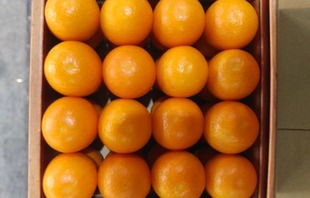
Cultivation of house kumquat in Satsumasendai City began in 1983, and in 2020 it was composed of 10 ha and 50 members (46 members cultivated in a house area of 9.6 ha in 2021) in the Sendai Kumquat Special Subcommittee. , Was cultivated. House kumquat, which is positioned as a priority item of the city, has been certified as a “Kagoshima brand production area” since 2004, and is shipped as “Kagoshima kumquat” Iriki “” not only in Kagoshima but also in the Kanto and Kansai regions.
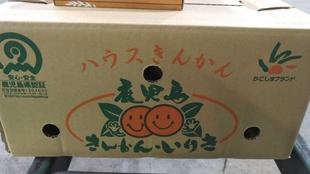
In fiscal 2005, we were certified by the Kagoshima Agriculture, Forestry and Fisheries Certification System, which requires environmentally friendly efforts from production to sales regarding food safety and security. Satsumasendai City has two production areas for kumquat, the Iriki district and the Togo district, and in order to produce high-quality kumquat, a management seminar is held once every two months. , It seems that they are trying to manage cultivation methods and share new information. Furthermore, since 2011, it has been working on overseas exports, and now it has been successfully established as a Spring Festival product.
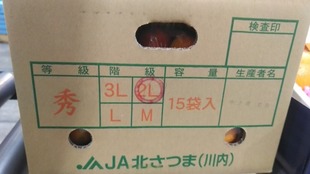
Izumi-Fumoto Samurai Residences: Shibuya in the Kanto region, who was a lord of a manor in the Kamakura period, entered this area and ruled under the name of “Izumi-Fumoto: A sect of the Chichibu Party”. It seems that it was demesne. In 1929, Kan’ichi Asakawa (born in Nihonmatsu City, Fukushima Prefecture), who was the first Japanese professor at Yale University in the United States, translated “related documents” into English and published them as “The Documents of Iriki”. Became famous by. The streets of the current Fumoto Samurai residences were created from the Middle Ages to the Edo period, and are characterized by gems and stones fences made from HIWAKI River stones and green tea and Podocarpus macrophyllus planted on the stone walls. It is a place that is neatly divided by the hedge of. The Fumoto district, which is located in the central part of the entrance, is an orderly division of gems and stone sweat fences using Kawaraishi, centered on Kiyoshiki Castle, which is the most powerful castle (mountain castle) of the Satsuma feudal clan that shook the four neighbors. There are many historic sites and cultural assets such as the samurai residence gate (thatched gate), the moat in front of the main gate, Hirobaba, and the ruins of a temporary store with a lower gate.
